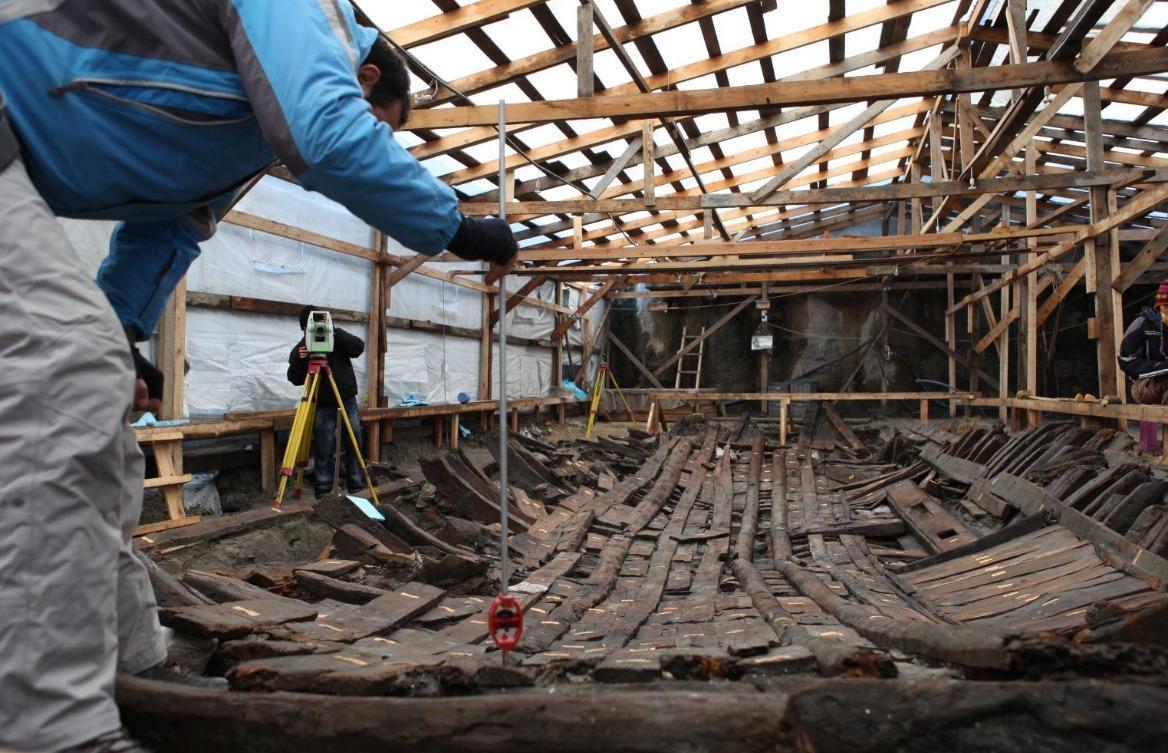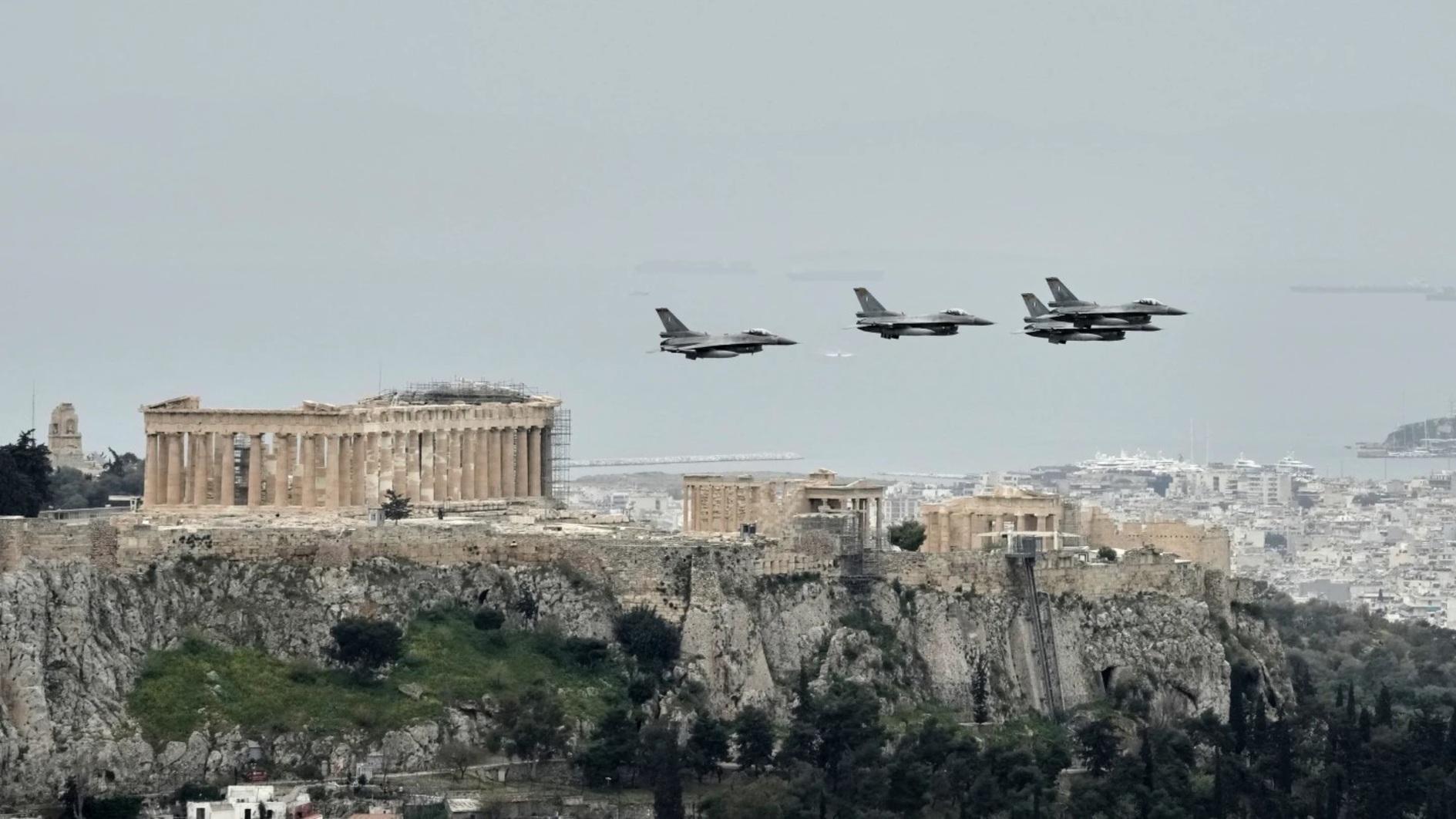History of 8,500 years waits for a museum
ISTANBUL

The conservation process of the Yenikapı shipwrecks, discovered during the Marmaray project and considered the world’s largest collection of ancient ships, has stopped due to the lack of a museum or a warehouse, says the head of the Yenikapı Shipwrecks Excavation and Conservation Project.
Stating that the Theodosius Harbor, which dates back to the 5th and 10th centuries B.C., and the 37 shipwrecks it contains, is the largest medieval ship collection in the world, Istanbul University’s Professor Ufuk Kocabaş said that thousands of archaeological artifacts await a museum.
“Istanbul has great potential in terms of underwater archeology. The city has the world’s largest repertoire of medieval sunken ships. This collection is not yet on display at a museum. But now the time has come. A museum where the artifacts from Yenikapı shipwrecks will be exhibited will attract millions of tourists to Istanbul and will bring this heritage to the fore,” he said.
Reminding that in 2010, when Istanbul became the world capital, a project had been designated to establish a museum in the region where Yenikapı Marmaray and metro stations are located, Kocabaş said: “ Kadir Topbaş, the mayor at that time, organized an international competition for the museum station project. Various projects were delivered in this competition, and as a result, a project was chosen to establish a museum in the area where Marmaray and metro stations are located in Yenikapı. After the completion of the process, tenders were expected to be held in 2015 for implementation. Unfortunately, a museum has not been established since then. I don’t see any preparation at the moment, too. Tens of thousands of Istanbul residents travel every day in a historical texture.”
Speaking to Demirören News Agency, Kocabaş said that the work in Yenikapı is a rescue excavation and that the rescue excavations normally take one to two years.
“In the world of archaeology, there are systematic excavations, such as Ephesus and Troy, ongoing for more than 100 years. There are also necessary rescue excavations. The dynamics of the two are different from each other. Yenikapı was also a rescue excavation. It was carried out by the Istanbul Archaeology Museums in the area where the metro and Marmaray projects will be built,” Kocabaş said.
“Rescue excavations are rapidly carried out, continuing for one or two years. There’s no rescue excavation that takes nine years. Excavations in Yenikapı continued for nine years, and in this sense, it was carried out as a systematic excavation. As a scientist responsible for shipwrecks in Yenikapı, I did all that I could do at that time. After the excavations finished in 2013, a conservation process started, which has been going on for 10 years.”
Too many shipwrecks
Kocabaş said that the conservation process of the artifacts requires a long procedure due to a large number of shipwrecks.
“There are many water-absorbed wood in the shipwrecks. These have absorbed water into their tissues and are degraded. In this process, chemical substances need to be slowly absorbed into these artifacts. We also use advanced technological devices to dry the works. These procedures continue because the number of wrecks is too many, and it is a long procedure. But the realization of the museum project will pave the way for us. Since a museum or a very good warehouse has not been established, we cannot move on to new shipwrecks. In this sense, there is a break in our workflow. A museum must be established in order to preserve the artifacts,” he said.
Stating that the archaeological plundering on land also exists underwater, Kocabaş said, “Especially in shallow depths such as the Mediterranean, it is almost impossible to find untouched shipwrecks with their amphora. Treasure hunting on land continues underwater, too. People consider the archaeological remains they find as a gift of their own skills. These works were exhibited in people’s homes and hotel lobbies. Diving zones are declared to protect these artifacts. But we also know that such prohibitions do not prevent treasure hunters. It is necessary to find other solutions for this. In particular, we need to explain to sportive divers that this cultural heritage should not be taken away. I think it is necessary to start an education campaign.”
Anatolian coasts home to world’s first scientific underwater excavations
Kocabaş stated that underwater surveys in Anatolian geography started in the 1960s, noting, “The first scientific underwater archaeological excavation in the world was carried out on the Anatolian coast. It started with the excavation of the Gelidonya Shipwreck in the 1960s by American archaeologist Professor George Bass, dubbed the father of underwater archaeology, who died a few years ago. These scientific studies have continued to the present day.”
“In this sense, Yenikapı shipwrecks, the world’s largest collection of sunken ships, constitute the last link of the chain. Underwater surveys and excavations, which started in the 1960s for the discovery of cultural heritage, continue actively today. All shipwrecks are recorded in the national database. These areas were formerly no-diving zones. But as these researches are completed, these regions are gradually opened to diving tourism.”
Noting that there will be more underwater archaeological excavations, Kocabaş said, “Our conservation legislation was not suitable for diving into historical shipwrecks that have archaeological value. However, with the new laws in recent years, it is aimed to make these shipwrecks navigable. For example, one of them, the historical Gallipoli Shipwrecks from World War I in Çanakkale, has been opened to diving tourism. Soon there will be more of these.”
















